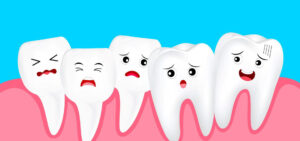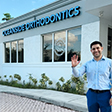Oceanside Orthodontics Blog

Braces and Summer Selfies: Your Guide to Picture-Perfect Smiles
Summer is the season of sunshine, beach days, pool parties, and—you guessed it—photos. Between group selfies, family vacations, and spontaneous beach shots, your camera roll is probably working overtime. And if you’re going through orthodontic treatment right now, you might be wondering how to smile confidently with braces in all

What to Eat with Braces: A Fort Lauderdale Orthodontics Guide to Braces-Friendly Foods
So, you just got braces. Congrats! You’re officially on your way to a straighter, healthier smile. But now comes one of the biggest questions everyone has in the beginning: “What can I eat with braces?” That’s a completely normal concern. Your teeth and mouth are probably feeling a little sore,

Why More Adults in Fort Lauderdale Are Choosing Invisalign in Their 30s and 40s
If you’re in your 30s or 40s and you’ve been thinking about straightening your teeth, you’re not alone. More adults are choosing Invisalign in Fort Lauderdale now than ever before. Maybe it’s because life has finally slowed down enough for you to focus on yourself. Or maybe it’s because modern

Holiday Foods to Avoid (and Enjoy) With Braces
The holidays are here, and so too are all those seasonal treats you dream about all year long. But if you wear braces, this time can feel a little bit different. That’s because there are some foods you will unfortunately have to forgo in an effort to keep your wires

Surviving Halloween if you Have Invisalign Aligners
Halloween is a time for spooky fun, costumes, and, of course, candy. If you’re wearing Invisalign, you might be wondering how to enjoy the festivities while keeping your treatment on track. Fortunately, with a bit of planning, you can have a frightfully good time without derailing your orthodontic progress. Here’s

Misaligned Mouths: What Causes Dental Drifting?
Many people think of their teeth as firm, immovable structures in their mouths that don’t ever change. The truth is, though, that they’re attached by different muscles and ligaments in your mouth that have a natural elasticity like any others. That means they have a certain capacity for limited movement






